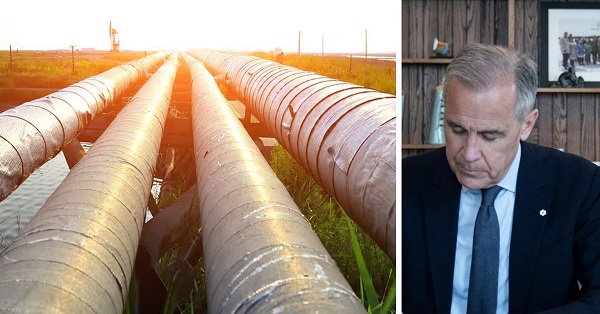Business
Trump targets billions in foreign aid with first pocket rescission in nearly 50 years

Quick Hit:
President Trump has initiated a rarely used budget tactic to cancel almost $5 billion in foreign aid and peacekeeping funds. The move, known as a “pocket rescission,” hasn’t been attempted since 1977 and comes after a federal appeals court cleared the way for the administration to act Thursday.
Key Details:
- Trump’s request targets $3.2 billion in USAID development assistance, $322 million from the Democracy Fund, $521 million in State Department contributions to international organizations, and more than $800 million tied to international peacekeeping.
- Spending flagged by the administration includes $24.6 million for “climate resilience” in Honduras, $2.7 million for a South African group accused of publishing anti-white content, and $3.9 million to promote LGBT initiatives in the Balkans.
- The legality of pocket rescissions is contested. The Government Accountability Office considers them unlawful, while Trump’s OMB cites precedents from the Ford and Carter administrations.
Diving Deeper:
President Donald Trump is moving to strike down nearly $5 billion in foreign aid and peacekeeping spending making use of a controversial budget tactic not exercised in nearly half a century. On Thursday night, Trump formally notified Congress of his intention to cancel the funding—hours after a D.C. appeals court lifted an injunction that had kept the money frozen.
The mechanism Trump is invoking is called a “pocket rescission,” a maneuver where a rescission request is sent so late in the fiscal year—ending September 30—that the money effectively expires regardless of congressional action. The last time a president attempted such a move was 1977 under Jimmy Carter.
The spending Trump is clawing back includes $3.2 billion in U.S. Agency for International Development development programs, $322 million from the USAID-State Department Democracy Fund, $521 million in contributions to international organizations, and $838 million in peacekeeping programs. These funds had been earmarked for foreign governments, NGOs, and U.N. peacekeeping missions but were stalled earlier this year by a lawsuit from the Global Health Council. With the injunction lifted Thursday, Trump seized the opening.
The White House has spotlighted a number of allocations it deems wasteful, pointing to $24.6 million for climate projects in Honduras, $2.7 million for South Africa’s Democracy Works Foundation—known for publishing racially charged content such as “The Problem with White People”—and $3.9 million earmarked for promoting LGBT political activity in the Balkans. Other projects include $1.5 million to promote the artwork of Ukrainian women.
The $838 million in canceled peacekeeping funds had supported operations such as U.N. missions in the Democratic Republic of Congo—where Trump officials recently helped negotiate a peace agreement with Rwanda—and in the Central African Republic, where peacekeeping efforts have been criticized for aligning with Russian-linked interests. Specific items cut include $11 million for armored personnel carriers for Uruguay’s peacekeepers, $4 million for a training center in Zambia, and $3 million for housing Kazakhstani peacekeepers. U.S. funding for the Multinational Force and Observers mission on the Egyptian-Israeli border remains untouched.
The legality of pocket rescissions remains disputed. The Impoundment Control Act of 1974 restricts presidential authority to block congressionally approved spending and requires Congress to act on rescission requests within 45 days. Trump has previously followed that route, recently signing off on rescissions that cut $1 billion from NPR and PBS and $8 billion from USAID.
But OMB Director Russ Vought and General Counsel Mark Paoletta argue that precedent exists for pocket rescissions, citing Carter and Ford-era actions. Paoletta has noted that in 1977, Carter submitted rescission requests that expired when fiscal deadlines lapsed, with the GAO “noting the lapse without objection.” He has since accused GAO of reversing its interpretation during Trump’s first term out of “Trump Derangement Syndrome.”
GAO could potentially challenge the maneuver in court, though questions remain about the agency’s constitutional footing, as some argue the comptroller general position itself could be vulnerable to a legal challenge. For now, Trump has revived a budgetary weapon not used in nearly five decades, setting the stage for another clash with Washington’s entrenched bureaucracy.
Business
Canadians can’t afford another Ottawa budget failure

This article supplied by Troy Media.
A $92 billion budget deficit looms. Canadians need more than promises this time
As Ottawa prepares its fall budget, Canadians should demand a clean break from the status quo. After a decade of unrestrained deficit spending, we are fiscally adrift: burdened by costly new programs and a bloated bureaucracy, and with little to show for it.
That’s why the Carney government must do more than tinker and finally deliver the kind of budget Canadians haven’t seen in years.
The previous Liberal government left office with a national debt nearing $1.4 trillion, having failed to balance the budget in its nine years in power. A growing share of tax dollars is now going just to service that debt.
While the government has pledged to reduce program spending by 15 per cent in the 2028-29 fiscal year through shrinking departments and cutting waste (after smaller reductions the previous two years), it is still on track to post a sizeable deficit of $92 billion for 2025-26, according to projections published by the C.D. Howe Institute. That should be a warning sign. Ottawa cannot rely on vague promises of restraint years down the road—it needs to act now.
Here is what the Carney government must do to get its finances in order:
1. It needs to roll back costly programs and reduce the size of government.
Under Justin Trudeau, the federal bureaucracy grew by nearly 100,000 people, a 38 per cent increase. Yet despite a considerable hike in personnel costs, Canadians would be hard pressed to point to noticeable improvements in service delivery.
Real reform would look like the Chrétien model from the 1990s. Faced with persistent deficits, the Chrétien government acted decisively, cutting over 42,000 public sector jobs. A comparable 17.4 per cent reduction today could eliminate 64,000 jobs and save almost $10 billion annually.
The review should also cover new programs that depend on deficit spending and often overlap with provincial responsibilities.
For example, the federal dental plan is projected to cost taxpayers $13 billion over five years, while the proposed pharmacare plan will cost $13.4 billion per year by 2027-28. Rolling back such initiatives could yield substantial savings.
2. The government must remove excessive regulation that is strangling Canadian business.
Between 2006 and 2021, federal regulations increased by 37 per cent, reaching 320,000 in total. Statistics Canada estimates that this reduced real GDP growth by 1.7 percentage points, employment growth by 1.3 percentage points, and labour productivity growth by 0.4 percentage points over the same time period. Those numbers may seem abstract, but the effect is concrete: less growth, fewer jobs, lower productivity.
Canadian businesses spend about 768 million hours a year on compliance—the equivalent of 394,000 full-time jobs. In 2024 alone, red tape cost businesses nearly $51.5 billion—a hidden tax on productivity.
Is anyone surprised that entrepreneurship in Canada is on the decline? In the year 2000, three out of every 1,000 Canadians had started a business. By 2022, that rate had fallen to just 1.3 per 1,000, representing a nearly 57 per cent drop.
Had Ottawa maintained 2006 regulation levels, Canada would have seen a 10 per cent higher rate of new businesses entering the market in 2021.
3. The Carney government must scrap harmful policies that undermine our energy sector.
Regulations aimed squarely at Canada’s oil and gas sector are setting the country up for a rude awakening.
Take Ottawa’s oil and gas emissions cap, set to take effect next year. It aims to reduce emissions from this sector to 35 per cent below 2019 levels, but reports from Deloitte and the Parliamentary Budget Officer (PBO) confirm that it is effectively a production cap.
Oil and gas accounts for 3.3 per cent of national GDP in 2024, but the emissions cap would change that. Deloitte estimates that by 2040, this regulation would lower Canada’s GDP by one per cent, representing a $34.5-billion loss in constant 2017 dollars.
The cap would also cost 112,900 Canadian jobs by 2040. The numbers all point in the same direction: the policy is an economic self-inflicted wound.
Similarly, the PBO projects that to meet Ottawa’s emissions goal, oil and gas production would need to be 4.9 per cent lower than current forecasts over 2030-32.
For a country with the world’s fourth-largest natural gas reserves and as the third-largest exporter, such policies are reckless. This fall, Canadians should not be presented with a budget that doubles down on the same policies that have already strangled business creation, driven away investment and suppressed living standards.
Canadians are long overdue for something we haven’t seen in years—a responsible budget.
Samantha Dagres is Communications Manager at the Montreal Economic Institute, an independent think tank with offices in Montreal, Ottawa, and Calgary.
Troy Media empowers Canadian community news outlets by providing independent, insightful analysis and commentary. Our mission is to support local media in helping Canadians stay informed and engaged by delivering reliable content that strengthens community connections and deepens understanding across the country
Alberta
Alberta’s fiscal update—and $6.5 billion deficit—underscores need for spending reductions

From the Fraser Institute
By Tegan Hill
According to the Q1 fiscal update, the Alberta provincial government will run a $6.5 billion budget deficit this fiscal year—up from the $5.2 billion budget deficit projected in the February budget. This may come as a surprise to many on the heels of a $8.3 billion surplus in 2024/25, but it’s all part of Alberta’s ongoing resource revenue rollercoaster. And it’s time to get off the track.
Resource revenues, including oil and gas revenues, are inherently volatile. For perspective, over roughly the last decade, resource revenue has been as low as $2.8 billion in 2015/16, accounting for just 6.5 per cent of total revenue, and as high as $25.2 billion in 2022/23, accounting for 33.2 per cent of total revenue.
Alberta has a long history of enjoying budget surpluses when resource revenue is high, but inevitably falls back into deficits when resource revenue declines. And it’s no surprise we’re back here today.
According to the recent fiscal update, resource revenue will fall by $6.3 billion this year compared to last. That means that of the $14.8 billion swing in Alberta’s budget balance, nearly 43 per cent can be explained by a decline in resource revenue alone. And if resource revenue was the same level as last year, Alberta’s budget would nearly be balanced.
Deficits have real consequences. Consider Alberta’s last period of deficits, which went on nearly uninterrupted from 2008/09 to 2020/21. Alberta moved from a position of having more assets, such as the Heritage Fund, than it did debt, resulting in a net debt position of $59.5 billion in 2020/21. Overall, Alberta’s net financial position deteriorated by $94.6 billion over the period. Correspondingly, Albertans went from having interest payments on provincial debt of approximately $58 per person in 2008/09 to $564 in 2020/21 (that number is expected to surpass $705 per person by 2027/28).
Fortunately, Alberta isn’t doomed to the boom and bust cycle.
The key is understanding that Alberta’s fiscal challenges are not actually a revenue problem—they’re a spending problem. Indeed, the underlying issue is that governments typically increase spending during good times of relatively high resource revenue to levels that are unsustainable (without incurring deficits) when resource revenue inevitably declines. Put simply, ongoing spending levels significantly exceed stable ongoing revenue.
The provincial government has made important strides in recent years by limiting spending growth to inflation and population growth. Unfortunately, spending levels were already so misaligned with stable, predictable revenue, that it is simply not sufficient to avoid deficits. Alberta needs meaningful spending reductions.
Fortunately, there’s some low hanging fruit to help get the province on track. For instance, Alberta spends billion of dollars annually dolling out subsidies to select businesses and industries. For perspective, in 2024/25, grants were the largest expense for the ministry of environment and the second largest expense for the ministry of technology and innovation. The provincial government should require that each ministry closely examine their budgets and eliminate business subsidies to yield savings.
According to the recent fiscal update, Alberta will continue to ride the resource revenue rollercoaster in 2025/26. It’s time to finally change course. That means meaningful spending reductions—and eliminating business subsidies is a good place to start.
-

 Business1 day ago
Business1 day agoBigger Government, Bigger Bill: PBO reveals $71.1 billion in federal personnel spending in 2024–25
-

 Alberta1 day ago
Alberta1 day agoNatural gas connection to breathe new life into former Alberta ghost town
-

 COVID-192 days ago
COVID-192 days agoRFK Jr. revokes emergency use authorization for COVID shots
-

 Alberta1 day ago
Alberta1 day agoAlberta’s fiscal update—and $6.5 billion deficit—underscores need for spending reductions
-

 Business1 day ago
Business1 day agoCanadians can’t afford another Ottawa budget failure
-

 Daily Caller14 hours ago
Daily Caller14 hours agoHUD Secretary Says Illegals May No Longer ‘Live In Taxpayer-Funded Housing’
-

 Crime2 days ago
Crime2 days agoPolice Say Victim Drugged, Kidnapped From Alberta in B.C. Human Trafficking and Cocaine Dealing Network
-

 Energy1 day ago
Energy1 day agoGuess there’s a “business case” after all. Europe wants LNG, but can Canada still provide it?








